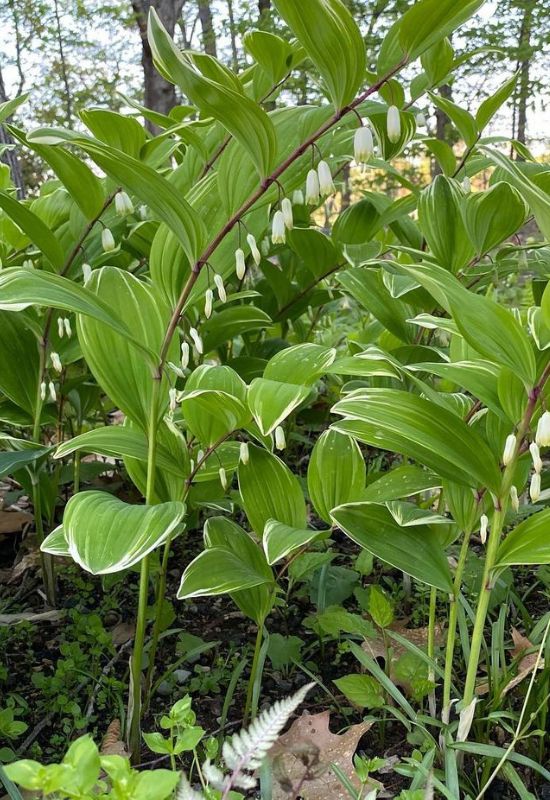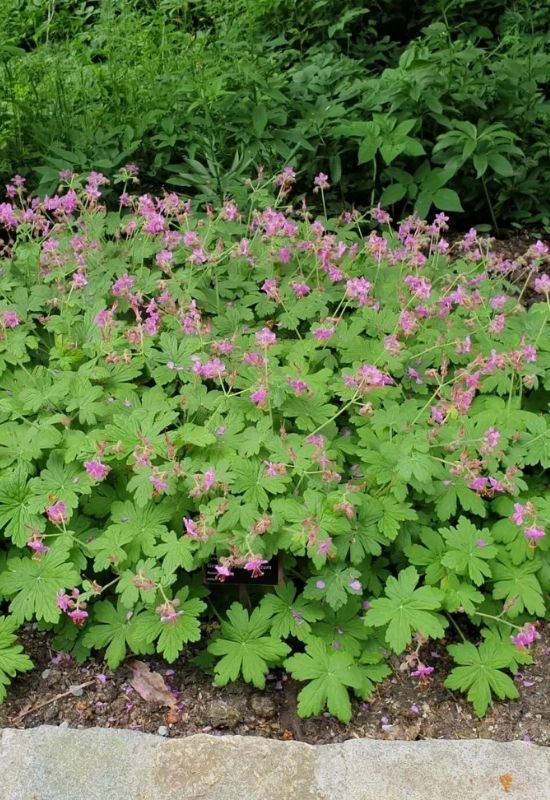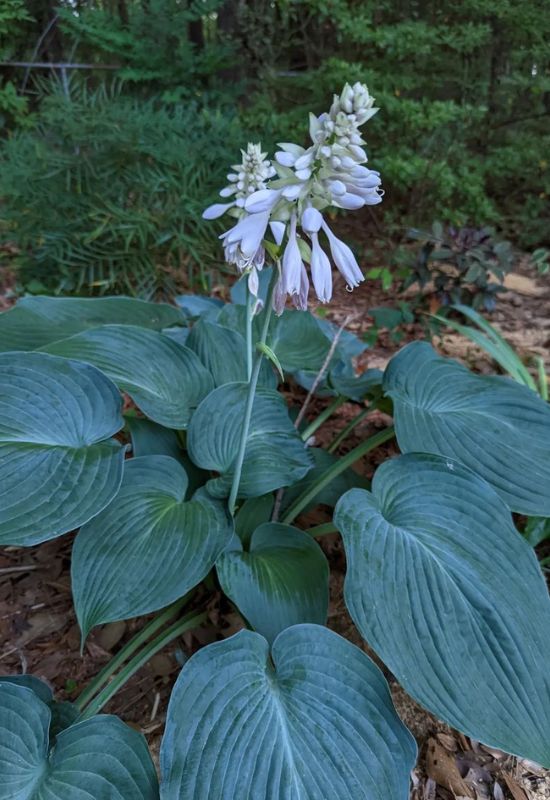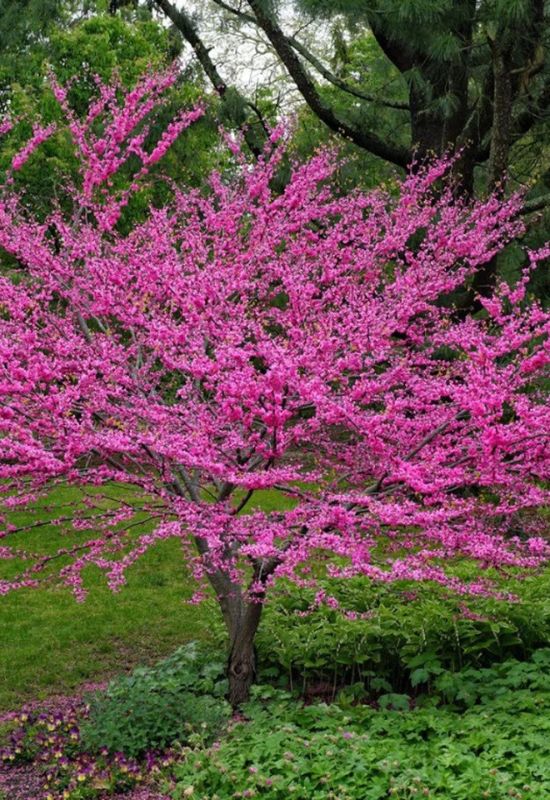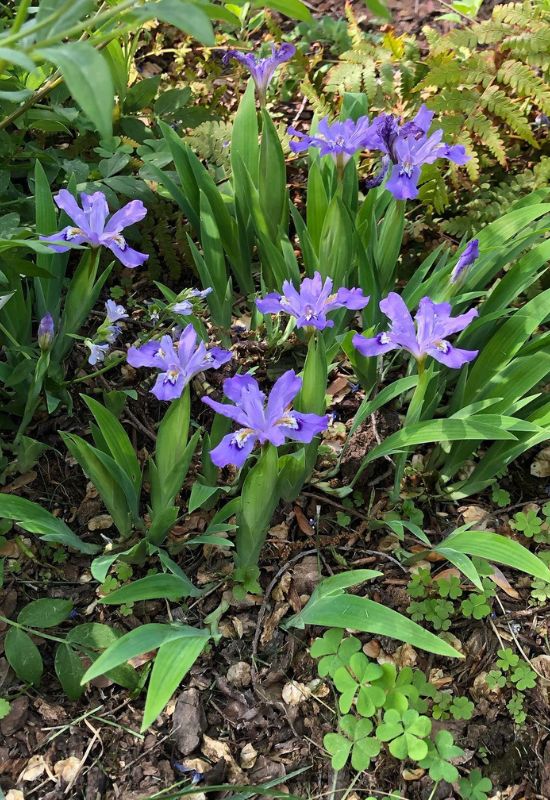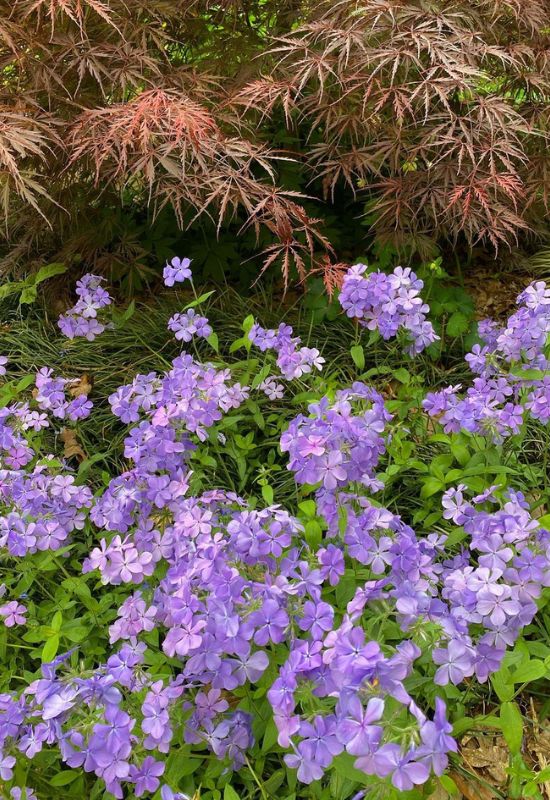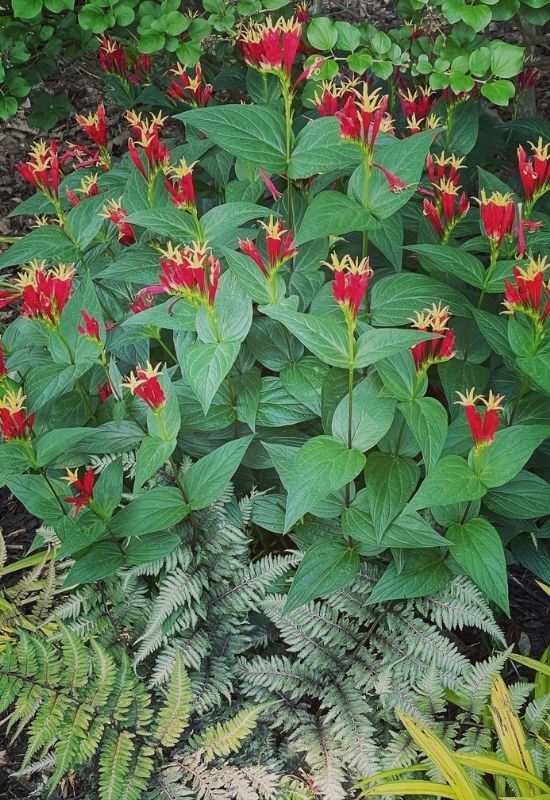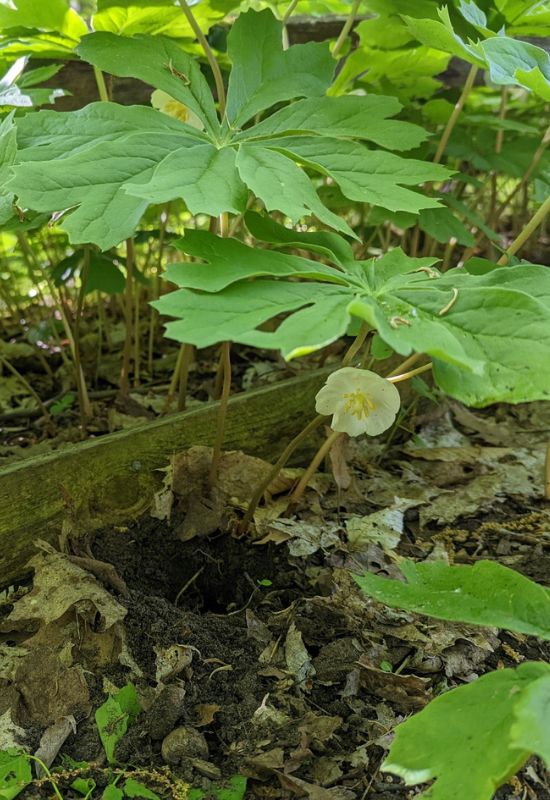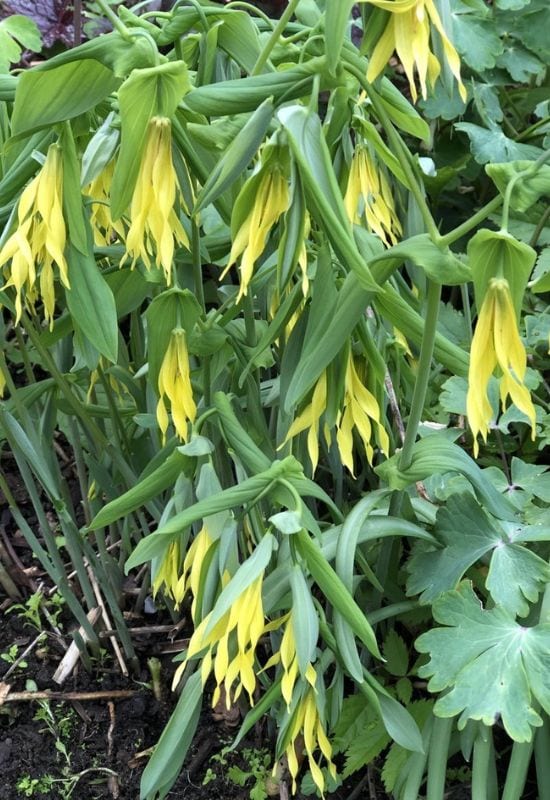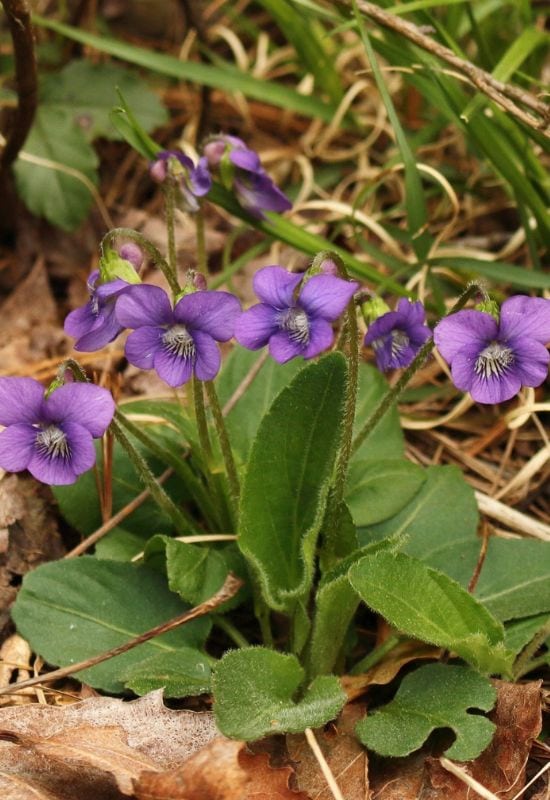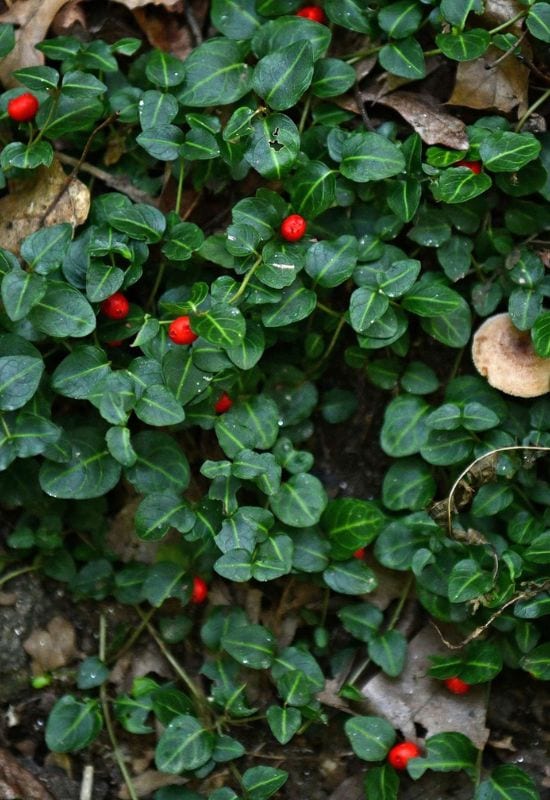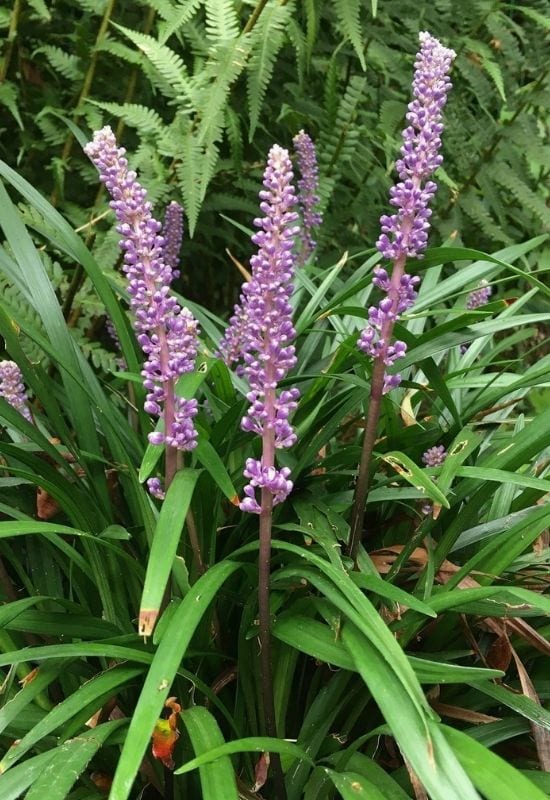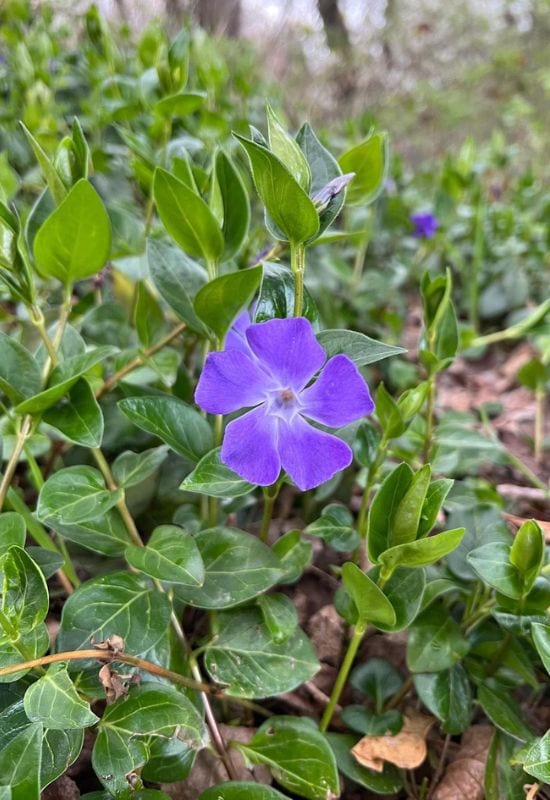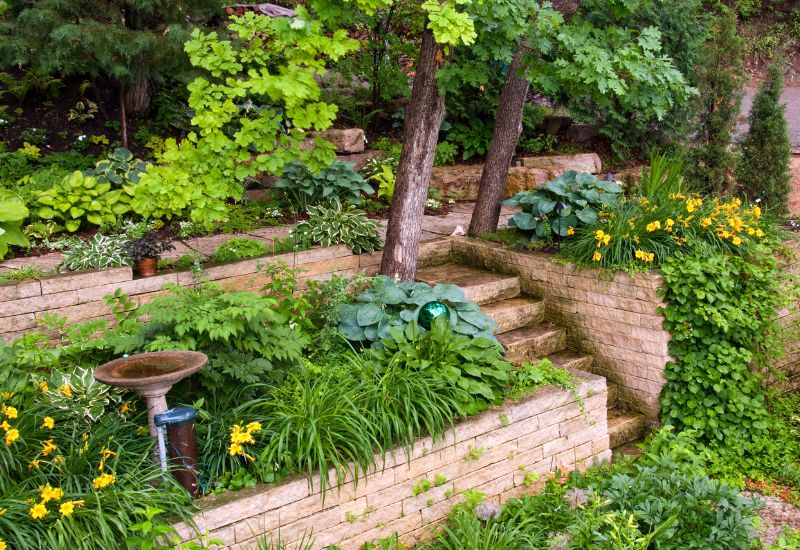
“You need lots of sunlight and water for a lush and florid garden,” we all think. But even in a dry and shady space under thick leafy tree canopies or overshadowed by walls and buildings, you can grow plants with great flowers and dense foliage. Indeed, if your land lacks both water and light, you’re facing two challenges, but a solution exists…
While many shade-loving plants originate from humid forests, there are actually numerous varieties of annuals, shrubs, and even trees that can flourish in dry soil and complete shade.
Not only that, these plants can also enhance your soil’s health. There are a few techniques to retain moisture, which we’ll explore shortly.
So, there is no need to leave that dark and dry corner of your green haven empty and barren. Just take a look below, and you will discover that you can grow shade-loving and drought-tolerant plants. Some of these plants are so eye-catching, unique, and even exotic that they’ll truly astonish you, causing your dry, shaded garden to brim with life.
We’ll introduce them soon, but first, let me offer some helpful tips and ideas on how to handle low light and dry soil conditions…
How to Create a Lush and Vibrant Garden in Dry and Shady Areas: Tips and Tricks for Success
Maybe it’s not the whole of your garden that has shade and is dry as well, but you don’t want to leave that patch barren. Also because if you don’t grow any plant there, your soil impoverishes even more.
So, before we look at which plant varieties you can grow there, let’s brainstorm a few simple ideas to help you with these two problems.
Use Mulching Against Dry Soil
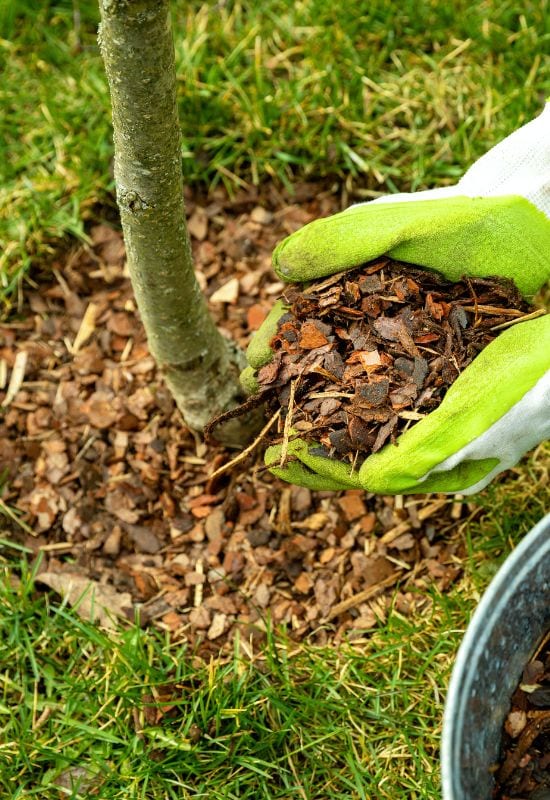
Think about it; Nature always tries to cover the soil. Why? Because if you cover it, it withholds humidity as well as nutrients! Learning a lesson, mulching has become one of us gardeners’ best friends.
Any type of mulching will do; even simple dry leaves or straw. If you want better looking options, then wood chips is usually a favorite. But never leave dry soil uncovered!
Add Organic Matter to the Soil
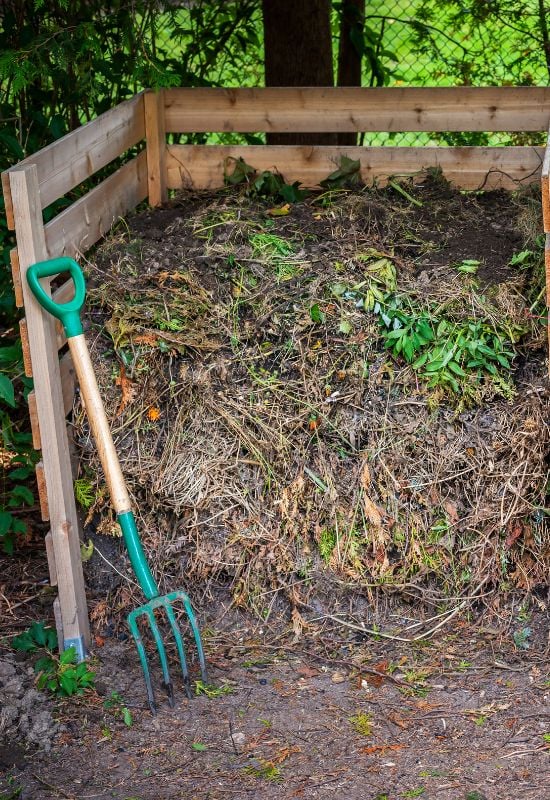
Organic matter withholds humidity in the soil. Simply put, it keeps it moist. Band it also adds nutrients, which favors vegetation growth. It is better to have weed growing in dry places than nothing at all!
Compost is the best solution here, but even just leaving fallen leaves on the ground is quite helpful to add nutrients and moisture to dry and also shady places.
Grow Groundcover Plants
Ground cover plants, like sprawling perennials and prostrate shrubs are excellent to keep humidity in the soil, and they also bring some color and interest in shady and poorly lit places.
These green helpers also re-establish the natural health of the soil, and they become lovely homes for small insects, which, as you know, are great for a living and florid garden!
And in fact, many of the plants that we have chosen for your dark and shady garden are good for ground cover, but not just – they are also good for beds and borders!
Use a Drip Irrigation System
Drip irrigation saves between 30 and 70% of water! And if you have a dry garden, it means that this precious good is at a premium… And you can hide the hosing under the mulch, which will save you even more water and conceal the system from view.
Open Up Your Garden to Sunlight
When it comes to deep shade, very few plants like it. If you can, thin the branches of trees and shrubs that hide the sunshine from your land. If you have a wall or fence, you may wish to change it. Ok, this can be costly, but still an option.
However, deep shade is really rare; in most cases, we should talk about part (partial) shade, dappled shade and light shade.
Even full shade is not really common, not even under trees, because it means that this spot gets less than 3 hours of bright light a day.
Surely you cannot pull down your neighbor’s house, and thus means that you will still need to choose plants that tolerate both dry soil conditions and lack of sunshine. So, let’s see which ones are best…
15 Drought-Tolerant Plants That Will Bring Life to Your Dry, Shaded Garden
Now’s the moment to unveil the enchanting array of plants that will thrive in your garden, despite the challenges of shade and dry soil conditions. It’s time for our botanical stars to shine!
Contrary to popular belief, shade-loving and drought-tolerant plants are not as elusive as they may seem. In fact, we’ve curated a list of some of the most adaptable and resilient varieties just for you. But remember, there’s an entire realm of possibilities beyond what we present here.
So, without further ado, Let’s explore 15 drought-tolerant plants that can thrive in dry, shaded gardens while adding beauty and vibrancy.
1: Solomon’s Seal (Polygonatum odoratum)
Solomon’s seal is the perfect perennial for shady and dry gardens. In fact, it thrives in full shade, and it is drought tolerant. But there is more, it is excellent as ground cover and it propagates fast and spontaneously with rhizomes!
The stems grow up and bend, fishing fishing rods, bearing soft looking, oval and bright green alternate leaves. White bell shaped flowers will open and nod under them, giving you a very elegant and lush looking plant.
Then, dark berries will follow as well. There is also a variegated variety, ‘Variegatum’ with splashes and stripes in cream white. And it is also fragrant!
Incredibly, Solomon’s seal will give you a florid and underbrush looking effect, even if the soil is dry and conditions are hard. And it’s very cheap to boot!
2: ‘Czakor’ Cranesbill (Geranium macrorrhizum ‘Czakor’)
A few cranesbill varieties are drought tolerant, so we picked a fabulous one for shady gardens: ‘Czakor’! It too will also cover the soil of your garden keeping it humid, and in warm countries it will do it all year round, because it is semi evergreen, but also fragrant!
So, its dense and finely textured lace like foliage will shelter small fauna, while you will enjoy its generous, delicate and old world looking blooms, that come up above it on thin stems.
These are deep pink, on the magenta side, adding a bright touch of life and color under your trees or in dark corners.
‘Czakor’, like other cranesbill varieties, is very low maintenance, virtually independent, and it will also spread fast and wide, thanks to its rhizomes. A cheap and fast solution for dry and shady spots!
3: Plantain Lily (Hosta spp.)
Despite their fresh, humid looking, underbrush personality, plantain lilies, or hostas, are drought tolerant, and they love shade! Their glossy, tender looking foliage forms bushy clumps of bright green, unless you pick a variegated variety, then you can also get cream and yellow!
The small but elegant flowers that pop up from this dense clump of greenery are very attractive, in shades from white to lilac. Some even have fragrant blooms. Loved all the world over, plantain lilies are good as ground cover, but also in flower beds.
Pick any plantain lily variety you want, to suit your taste but… Talking about taste, well, the main problem with these small and leafy perennials is that snails and slugs really love them. Keep them away with coffee grounds or other organic methods.
4: Eastern Redbud (Cercis canadensis)
If you are looking for a tree to grow in dry conditions in the shade of a tall wall or building, eastern redwood is your man! Fabulous when in bloom, in fact, this North American native is ideal for xeric and mesic gardens.
The small, pink flowers fully cover the elegant branches like a cloud, then leaves follow. And these are broad, heart shaped, drooping and bright green till fall, when they turn cream yellow, bronze and purplish. It will also display decorative brown seedpods well into the winter season!
You can grow eastern redbud as a specimen plant, or make it part of your hedges. In any case, it will attract so many butterflies, bees and pollinators that your dry and shady garden will come alive with fluttering wings!
5: Dwarf Crested Iris (Iris cristata)
Dwarf crested iris will turn your dry soil in the shade into a lovely carpet of color and lovely shapes. The light blue violet flowers come in regular clusters of three, and because they are low, you can really appreciate the arrangement on the stems.
These are crowned by fleshy, glossy sword like leaves with a bright to mid green range. Low maintenance and reliable, they decorate the ground with their cheerful presence, and they are actually very good perennials to grow as ground cover.
Dwarf crested iris blooms well in dry shade, so you won’t need to worry about the end result. It will also naturalize and spread thanks to the rhizomes that produce new plants under the canopy of trees, even with little water!
6: Blackhaw (Viburnum plurifolium)
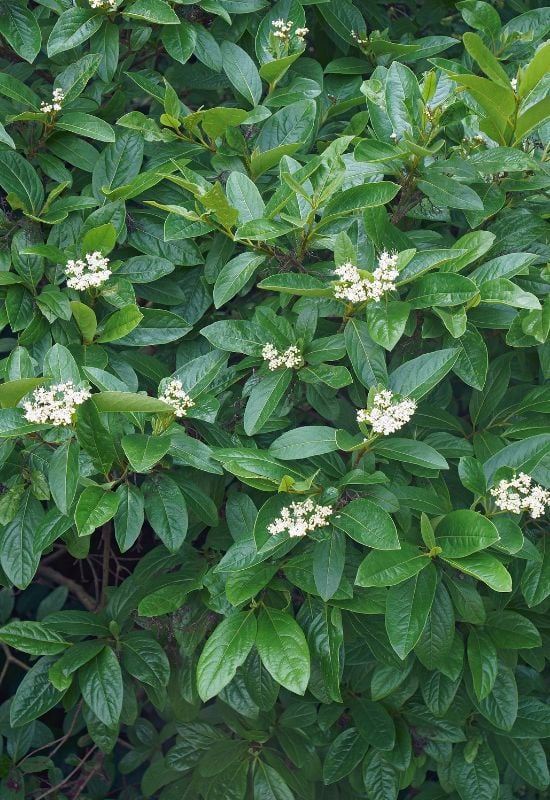
Shrubs really transform shady and dry gardens with their lush foliage, and blackhaw is just perfect for this! Vigorous and low maintenance, it will also produce lovely clusters packed with many sweet looking, star shaped white flowers that pollinators love!
They come on red stems, which contrast beautifully with the bright green, oval leaves. They will be followed by tasty and edible pink berries that turn dark, almost black when ripe. And birds love them too! You can even train this cold hardy Viburnum variety into a small tree if you wish.
The added bonus of growing blackhaw in a dry and shady spot is that it keeps the soil sheltered when it has leaves on, and when they fall, they add a lot of organic matter, which retains humidity and fertilized the ground!
7: Woodland Phlox (Phlox divaricata)
Excellent under trees, perennial woodland phlox can transform dry and shady areas into lovely, fragrant and colorful green havens! Worthy winner of the famous Award of Garden Merit by the Royal Horticultural Society, this semi evergreen explodes in a profusion of blooms that can be blue rose or lilac.
Just take your pick! And they all are strong scented and very dense, blossoming above the lance shaped leaves. Easy to grow and low maintenance, it is also good as ground cover, and you know how useful this is when water is scarce.
Ideal for natural looking gardens, woodland phlox adapts both to beds and borders, or for underplanting in the shade of shrubs and roses as well!
8: Indian Pink (Spigeliamarilandica)
It is hard to bring warm, bright colors under the shades of trees or in a dry and poorly lit garden. But you can with Indian pink!
This perennial boasts trumpet – or vase – shaped, upward looking flowers that are 2 inches long (5.0 cm) and very scarlet on the outside, while you can see a lime green yellow hint as the start shaped mouths open!
The come in regular clusters on long stems above the lush foliage, attracting hummingbirds. The leaves are glossy, lush and lance shaped, and they form dense clumps where small animals can hide, and protecting your soil!
Ideal for beds and borders, Indian pink is a low maintenance shade loving perennial you can adapt to virtually any informal landscaping style, including city, cottage and coastal gardens!
9: Virginia Spiderwort (Tradescantia virginiana)
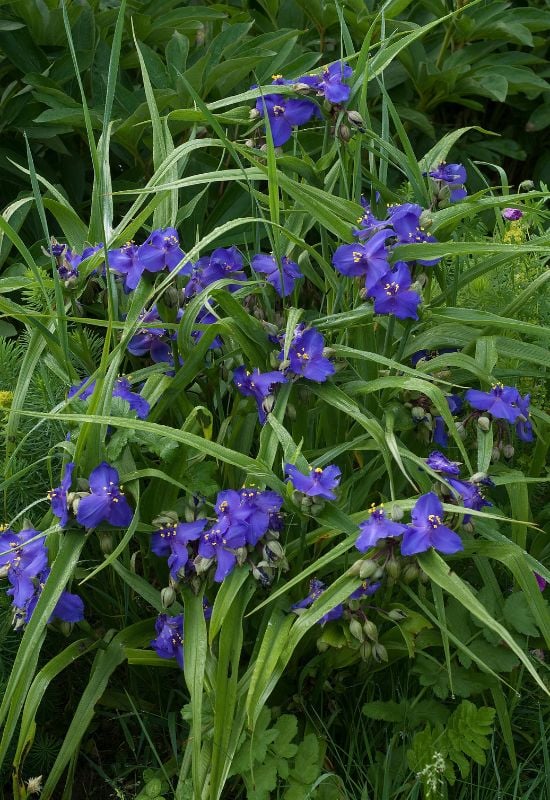
Tradescantia has iconic flowers with three petals, and there are a few famous succulent varieties, but shade loving Virginia spiderwort is special.
The blooms are of an intense violet to blue color, sometimes purple, and quite large for this genus, about 2 inches across (5.0 cm). They come in late spring in clusters above the mid green foliage, which forms a carpet of grass blade like leaves.
It will go dormant in summer if you live in a hot country, but it will come back as the weather cools. You can grow it as ground cover as well, or in beds and borders.
Virginia spiderwort is drought tolerant but only once established, so, try to give it a little water at the beginning. But it will pay you back again and again, not just with just decorative value, but also by protecting your soil!
10: May Apple (Podophyllum peltatum)
May apple is a little known perennial which tolerates both full shade and drought. And it is quite decorative indeed! It has shiny bright green leaves, broad dented at the margins and they rest like umbrellas, arching just gently from the tender looking stems.
They can be quite big as well, up to 12 inches across (30 cm)! Look what’s hidden under their protective shadow and you will find round, white blooms with a yellow center, that look a bit like a dog rose, or an apple blossom.
But they are quite big too, about 3 inches across (or 7.5 inches)! And they also produce fruits which are green at first and poisonous, and then golden when fully ripe. And at that stage they are edible as well.
This strange perennial, May apple, is ideal under trees, and it can also be grown as ground cover. Given its beauty, it also deserves a good place in a flower bed or border! And it is also very cold hardy…
11: Bellwort (Uvuvularia grandiflora)
Let me surprise you with another unusual perennial you can grow in a shady and dry garden: bellwort. Winner of the Award of Garden Merit by the Royal Horticultural Society and exotic looking, it has long, nodding flowers that look little upside down fires, yellow in color.
These are followed by strange looking fruits, with three lobes. The foliage forms a lovely clump and it too is a original.
Soft looking and mid green, the leaves are pointed at the tip and broad and rounded at the back, like a guitar pick, and they are attached to the stems not at the end, but in the middle!
Surely if you want to wow your visitors and show them you can grow even extraordinary plants in the shade and with dry soil problems, bellwort is the best perennial to choose!
12: Sand Violet (Viola affinis)
Why not have a classic flowering perennial in your poorly lit and dry garden! Sand violet is a tough variety that will tolerate harsh conditions like these. And it is really the most typical looking violet ever.
With lovely violet blue petals, fading to pale while showing marked, dark veins towards the mouth, they are sweet and and delicate.
Which is the opposite of this tough variety, which actually prefers moist soil, but it does not mind it if it is the opposite as well. The leaves are heart shaped, deep green and they form lovely clumps – excellent as ground cover.
Do water sand violet regularly when you plant it, though, because it becomes drought tolerant only once established. If springs are wet, then you really are in luck!
13: Partridge Berry (Mitchella repens)
Another original shade loving and dry soil tolerant plant is partridge berry. Technically, it is a subshrub, a prostrate shrub that grows attached to the soil. And you guessed: this makes it perfect as ground cover.
It has many tiny, very, very glossy and shiny oval leaves, deep green and attached to the snaking branches. It will produce many small, fragrant trumpet shaped flowers, white with a pink blush, and it will do it from spring to fall!
The berries are spherical, bright red and edible, though people who have tried them say that they are flavorless. Still, they look like little jewels scattered on the ground!
This creeping shrub gives you interest all year round, being evergreen and keeping the berries on in winter, and it is easy to grow. Partridge berry really suits dry and shady gardens that want to have an intriguing living carpet spread on them!
14: Blue Turf Lily (Liriope muscari)
Freshen up and brighten that dry and dark corner in your garden with blue turf lily! This tuberous perennial will cover the soil with lush, long and thin and fleshy green leaves that look like a thick carpet!
And then you also get the blooms! Looking like hyacinths on a smaller scale, the many bell shaped flowers cram on long stems, and they come in such profusion that, if you mass plant it, or if you let it naturalize, you will literally see a sea of blue or violet blooms under your trees! It has won the Award of Garden Merit by the Royal Horticultural Society.
Very easy to grow, blue lily turf is excellent for ground cover but also beds and borders; it is very reliable, and there are also variegated varieties if you want to ad an extra decorative touch.
15: Big Periwinkle (Vinca major)
Big periwinkle has that underbrush look that you want in shady and dry gardens, and it spreads fast and spontaneously, giving you excellent ground cover.
Forming mats of glossy, dark green and oval leaves, it then sparks up with star shaped, blue, violet or white flowers.
And this display goes on all through the season, intermittently! When the cold season comes, you will still have the foliage, because it is evergreen.
And if you want the same effect but on a smaller scale, you can pick its “little sister”, lesser periwinkle, or Vinca minor, which is also cold hardy to USDA zones 4 to 9.
Big periwinkle is an independent sprawling undershrub that really sorts out all your problems with dry land and lack of light; you can even cover large areas with it, just planting a few specimens and waiting till it propagates: and it is a matter of weeks or months, not years!
Dry And Shady Gardens, But Full Of Flowers!
I hope I have reassured you that there are quite a few beautiful plants that you can grow even if your garden – or part of it – lacks in sunlight and it has dry soil. Actually, as I promised, so e varieties are really surprising and even exotic looking.
We have looked at perennials, shrubs and even at a tree, but we have focused on those you can use to keep your soil healthy…
Actually, if you use the ground cover varieties we have shown you, your dry soil will improve, and then you will be able to grow even more plants! It can recover in two or three years, becoming moist retentive, so, it’s not a long wait, and the best is yet to come!

Written By
Adriano Bulla
After many years as an academic in London, Adriano Bulla became a writer, publishing books like A History of Gardening, Organic Gardening and Elements of Garden Design; he then decided to become a gardener, following his childhood dream, and has been following his dream writing and gardening professionally in Southern Europe, where he has specialized in new and innovative organic gardening fields and techniques, like permaculture, regenerative agriculture, food forests and hydroponics.

